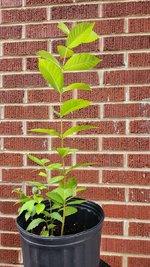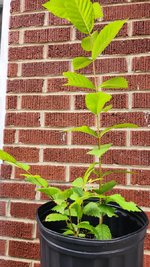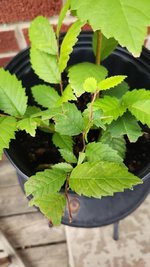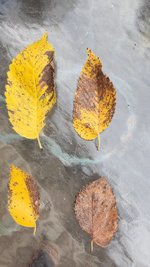Skludgie
Seed
This past spring I had several American(?) Elm seedlings set up camp in an unused nursery pot that still had some soil in it. Of the dozen or so seeds to sprout, there are about 4 or 5 seedlings left. Of those, one has taken off and is 24+ inches tall. Something ate/ stripped the leaves off the others and they are much smaller but seem healthy.
I would like some advice on how to best ensure that I can get one or more of these seedlings into bonsai pots at some point in the future. It occurred to me to put them into the ground for a few years, but I am not sure how to best go about this, I also don't have the space to be growing 4 or 5 Elm trees individually. Assuming I doing plant them:
- should I plant them now, or in the spring?
- If I plant them, how good/ bad of an idea is it to plant them as group and try to separate them after a year or two?
- What type of work will need to be done to them seasonally/ yearly to help set them up to make good bonsai down the road?
If I opt to leave the seedlings potted, what should I be doing to prepare them for winter? Also, should I leave all of them in the pot until spring, or should I remove the weakest now and make more room for the best candidates?
I would like some advice on how to best ensure that I can get one or more of these seedlings into bonsai pots at some point in the future. It occurred to me to put them into the ground for a few years, but I am not sure how to best go about this, I also don't have the space to be growing 4 or 5 Elm trees individually. Assuming I doing plant them:
- should I plant them now, or in the spring?
- If I plant them, how good/ bad of an idea is it to plant them as group and try to separate them after a year or two?
- What type of work will need to be done to them seasonally/ yearly to help set them up to make good bonsai down the road?
If I opt to leave the seedlings potted, what should I be doing to prepare them for winter? Also, should I leave all of them in the pot until spring, or should I remove the weakest now and make more room for the best candidates?




